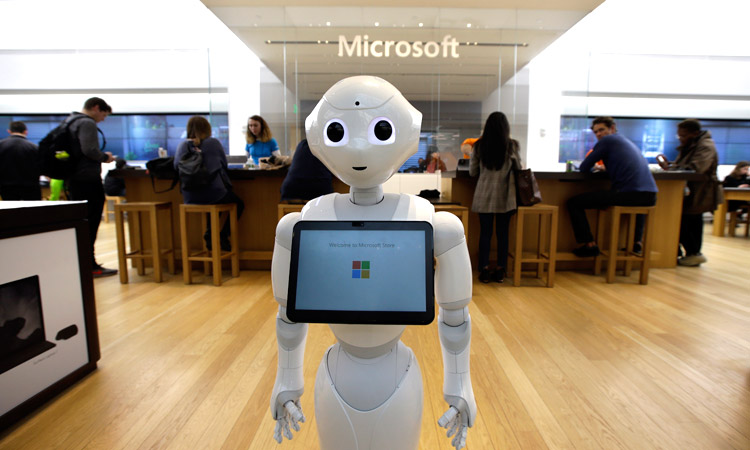
Based on international figures and statistics concerning human usage, I predict that the number of Internet users’ in the world will reach more than 7.7 billion users by 2030, accounting for more than 90 per cent of the world’s population expected at the time, with more than 7 billion of them using Internet through their smart phones.
But as for the devices, they will connect directly to the Internet through Internet of Things “IoT”. According to IHS Markit, a world leader in critical information, analytics and solutions, the number of connected Internet of Things (IoT) devices worldwide will jump 12 per cent on average annually, from nearly 27 billion in 2017 to 125 billion in 2030. The global data transmissions are expected to increase from 20 to 25 per cent annually to 50 per cent per year, on an average, in the next 15 years.
Objectives of sustainable development
Goal 17 of the Sustainable Development Goals says: Revitalize the global partnership for sustainable development; Urgent action is needed to mobilize, redirect and unlock the trans-formative power of trillions of dollars of private resources to deliver on sustainable development objectives.
Long-term investments, including foreign direct investment are needed in critical sectors, especially in developing countries. These include sustainable energy, infrastructure and transport, as well as information and communications technologies.
This will require communication between the world’s population at the personal, organisational and governmental levels, with more effective and influential parameters than the present time.
Therefore, the Artificial Intelligence journalism will contribute to support this partnership through the availability of smarter, less expensive technologies, which will significantly contribute to the transmission of media content among variable global audience, coming from local or limited regional level.
And as I said before, “Artificial Intelligence journalism will move the world from a small village to a micro-screen”.
UN aims to achieve: Enhance North-South, South-South and triangular regional and international cooperation on and access to science, technology and innovation and enhance knowledge sharing on mutually agreed terms, including through improved coordination among existing mechanisms, in particular at the United Nations level, and through a global technology facilitation mechanism.
- Read also: First Arabic Robot Anchor on UAE Screens
To promote the development, transfer, dissemination and diffusion of environmentally sound technologies to developing countries on favorable terms, including on concessional and preferential terms, as mutually agreed.
Fully operationalise the technology bank and science, technology and innovation capacity-building mechanism for least developed countries by 2017 and enhance the use of enabling technology, in particular information and communications technology.
All these requirements need strong, more dynamic and continuous media operations, with audience day and night, transcending the borders of countries legally and geographically. That’s what will characterize the Artificial Intelligence journalism era.
Artificial intelligence journalism requires the availability of Open data and the analysis of Big data, which contributes significantly to the quality of global partnership of the world, which will then enhance United Nations requirements of Goal 17.
Goal 17 aims to enhance international support for implementing effective and targeted capacity-building in developing countries to support national plans to implement all the sustainable development goals, including through North-South, South-South and triangular cooperation.
- Read also: 10 ways AI Journalism is changing the world
Artificial Intelligence journalism will strongly support partnership all over the world. There will be no isolated countries or minorities separated from the world, everyone will be partners in development.
What affects the developed world is also affecting developing countries, and what negatively affects the citizens of poor countries also affects the citizens of the developed world.
According to the World Economic Forum, the value of digital transformations in the Fourth Industrial Revolution is estimated at $100 trillion in the next 10 years alone, across all sectors, industries and geographies. The manufacturing sector, which has long been a driver of global prosperity and economic growth, is key to this transformation.
Emerging technologies such as AI, robotics and 3D printing are disrupting the manufacturing industry and unlocking new ideas and potential that were previously unimaginable.
- Read also: How could AI Journalism Democratize Info?
With this change comes opportunity. 3D printing, in particular, is at the forefront, given its ability to reshape the sector. If we make the right decisions, it can also drive sustainable impact for our planet, people and communities, according to the World Economic Forum.
Finally, AI journalism and the Fourth Industrial Revolution technologies in media will enhance global partnership for sustainable development, complemented by multi-stakeholder partnerships that will mobilize and share knowledge, expertise, technology and financial resources, to support the meeting of the sustainable development goals in all countries, in particular developing countries.
Twitter @Mohamabdulzaher
LinkedIn: Mohamed Abdulzaher








